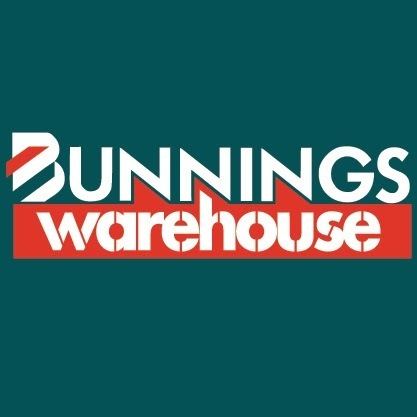Operating income Revenue 11.6 billion AUD (2016) | Industry Hardware Total assets A$6.6 billion (2016) Number of locations 324 Number of employees 31,000 | |
 | ||
Area served Australia, New Zealand, United Kingdom Key people John Gillam(CEO/Managing Director) CEO Michael Schneider (Mar 2016–) Profiles | ||
Case study bunnings warehouse
Bunnings Group, trading as Bunnings Warehouse, is Australia's largest household hardware chain. The chain has been owned by Wesfarmers since 1994, and has stores in Australia, New Zealand, and the United Kingdom.
Contents
- Case study bunnings warehouse
- Pre 1900s
- 20th century
- Store development post 1994
- Community involvement
- References
Bunnings was founded in Western Australia in 1887, by two brothers who had emigrated from England. Initially a limited company focused on sawmilling, it became a public company in 1952 and subsequently expanded into the retail sector, purchasing several hardware stores. Bunnings began to expand into other states in the 1990s, and opened its first warehouse-style store in Melbourne in 1994. The chain currently has over 300 stores and over 30,000 employees. Bunnings has a market share of around 20 percent in the Australian retail hardware sector, with competing chains including Home Timber and Hardware, Mitre 10 and various independent retailers.
Pre 1900s
In 1886 brothers Arthur and Robert Bunning left London to settle in Perth, Western Australia, and soon gained a government building contract, which led to them founding a group of building companies which later became 'Bunning Bros Pty Ltd'. They purchased their first sawmill the following year in the south west of Western Australia, and over the next few years they concentrated more on sawmilling and timber distribution and less on building.
20th century
The company expanded to include several new mills around Western Australia. In 1952, Bunnings Limited became a public company, expanded into retailing and purchased several hardware stores. In 1970, Bunnings bought the merchandising and sawmilling operations of the Hawker Siddeley Group. In 1983, they bought out Millars (WA) Pty Ltd and, in 1990, the Alco Handyman hardware operations. The Victorian stores McEwans, owned by James McEwans Limited and the South Australian stores, Harry's & Lloyds were acquired by Bunnings in 1993, with many branches subsequently closed, leaving only the best performing sites. Bunnings Limited was then bought out by Wesfarmers in 1994. In late 1995, the 'Red Hammer' symbol was introduced and in June 1996, its trademark slogan "Lowest Prices Are Just The Beginning" was established. Both are still in use today.
Store development post-1994
After the acquisition of Bunnings by Wesfarmers, the first Bunnings Warehouse was opened in the Melbourne suburb of Sunshine by Victorian premier Jeff Kennett and Joe Boros, the managing director of Bunnings. This was quickly followed by three other Melbourne stores. Subsequently, new warehouses have been opened, on average, every three months across Australia. Development in Sydney and Brisbane proved more difficult than in other areas, as large blocks of land in the metropolitan area were limited. In 1997, the remaining smaller-format McEwans stores were renamed "Bunnings".
In August 2001, Wesfarmers bought the Howard Smith Group, owner of BBC Hardware and big-box offshoot, Hardwarehouse. This supplemented the Bunnings national network by several dozen stores, many of them large Hardwarehouse stores in Sydney, Brisbane and New Zealand. Hardwarehouse had been dominant in New South Wales and Queensland, but the purchase complemented Bunnings' prior domination in Victoria, where Hardwarehouse had only seven stores to Bunnings' twenty at the time of the buy-out. The market leader at the time of purchase was Mitre 10 with 12% market share but inclusion of the Hardwarehouse and BBC Hardware stores brought Bunnings market share to 13.5%.
Hardwarehouse and BBC Hardware stores retained their branding for a year, while television advertisements were tagged with each of Bunnings Warehouse, Hardwarehouse and BBC Hardware during this transition period. Lower-volume stores were closed and, in 2002, remaining Hardwarehouses were renamed Bunnings Warehouse.
From 2004 to 2008, Bunnings purchased and re-branded Mitre 10 stores in Griffith, Kempsey, Randwick and Wodonga, Magnet Mart in Griffith and a Mitre 10 MEGA store in Modbury. In 2008 the Australian Competition and Consumer Commission (ACCC) looked into its acquisitions of five Mitre 10 stores, as it deemed the purchases would be anti-competitive. In February 2009, the ACCC allowed the purchases, finding that "the acquisition of the Mitre 10 stores did not significantly alter the level of competition in the relevant market."
Since the development of the Bunnings Warehouse stores, two general operational formats exist: Bunnings and Bunnings Warehouse. The smaller "Bunnings" stores stock a more limited range of hardware, whereas the larger "Bunnings Warehouses" contain a more comprehensive hardware range and, often, garden supplies including plants. Over time, some smaller-format Bunnings stores have gradually been closed. However, 2015 saw six new stores open in Victoria, mainly in smaller regional markets and inner-suburban areas. The "big box" format comprises 167 stores of the network of 280.
In February 2016, Bunnings' parent company Wesfarmers bought the United Kingdom-based hardware chain Homebase for £340 million. The chain's 265 stores in the UK and 15 in Ireland will be rebranded with the Bunnings name within five years. The first Bunnings store in the UK was opened at the end of January 2017, four months later than planned to ensure the adopted format was suited to the UK public. The company plans to use that store as a test model prior to fine-tuning and expanding in that region
Community involvement
On weekends, Bunnings outlets regularly host sausage sizzles and cake stalls for community groups and causes. Having become a ubiquitous part of the Bunnings Warehouse brand, its sausage sizzles have reached iconic status within the Australian public.
Bunnings also provides gardening, craft, and woodwork Do it yourself (DIY). workshops for children in store, as well as for other groups in schools, nursing homes, and hospitals. The Bunnings staff is available to community groups for assistance with DIY projects.
